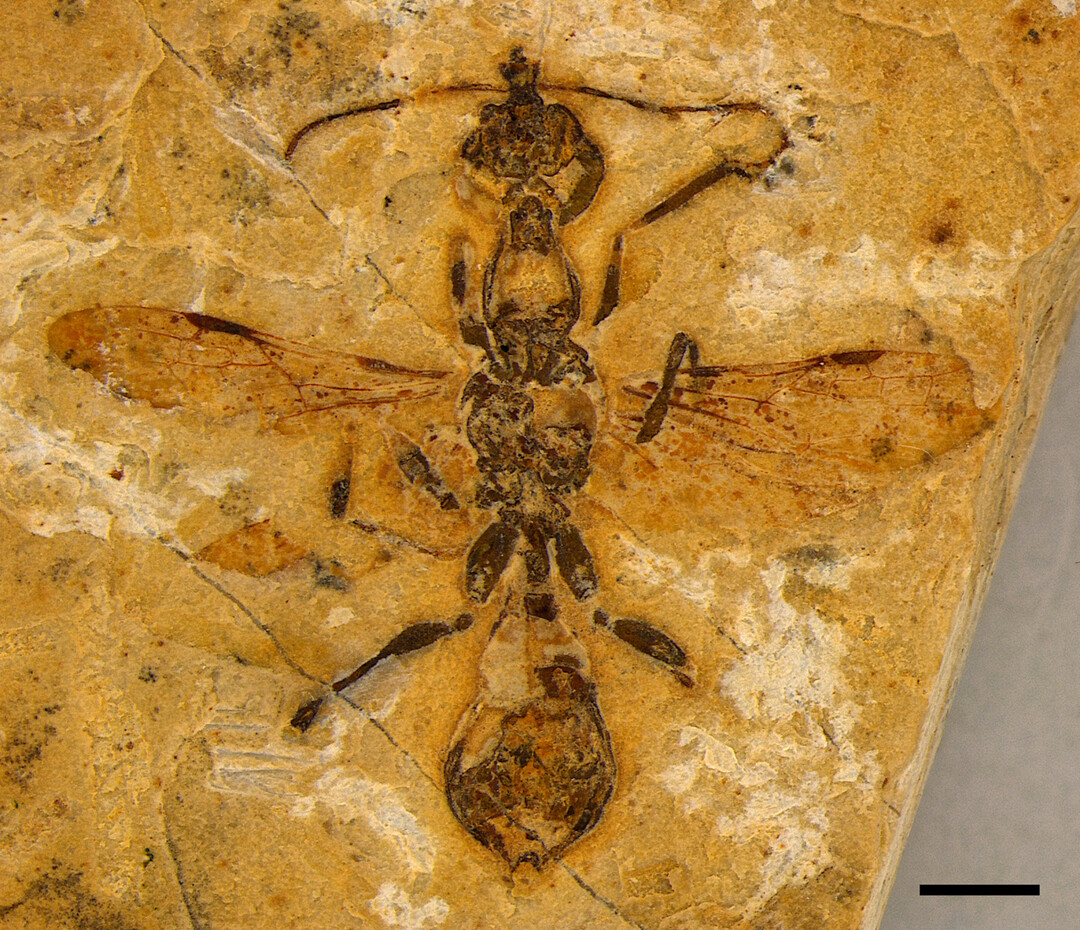Unique Scythe-Shaped Mandibles and Hunting Method: Suggesting Early Ant Diversity and Specialized Ecosystems

While Mars rovers are tracking traces of life, on Earth, a fossil of a 'hell ant' estimated to have lived 113 million years ago has been discovered, drawing the attention of the academic world. This discovery not only surpasses the previously known oldest ant fossil record but is also expected to provide crucial clues for understanding the early evolution and ecological characteristics of ants.
According to a report published on April 24th in the international academic journal 'Current Biology,' the research team led by Anderson Lepeco of the Zoological Museum of the University of São Paulo in Brazil discovered an astonishingly well-preserved hell ant fossil in the limestone strata of the Crato Formation in northeastern Brazil. This hell ant belongs to the extinct subfamily Haidomyrmecinae, which existed only during the Cretaceous period, and is presumed to have captured prey by stabbing with its specialized scythe-like mandibles.
Dr. Lepeco stated, "Our team has discovered a new fossil ant species that represents the oldest undisputed geological record of ants. What is particularly exciting about this discovery is that this fossil belongs to the extinct 'hell ants,' known for their bizarre predatory adaptations. Despite being part of an ancient lineage, this species already shows highly specialized anatomical features, suggesting unique hunting behavior."
The researchers explained that this ant fossil discovery challenges the understanding of ant evolution and biogeography over time. Previously, the oldest ant fossils were found in France and Myanmar, preserved in amber rather than limestone. The presence of hell ants in Brazil suggests that ants were already widely distributed and diversified in their early evolution, the team added.
Dr. Lepeco emphasized, "While there were hell ants found in amber, this is the first time we have been able to visualize them in a rock fossil."
The research team discovered this "remarkably well-preserved" ant specimen while conducting systematic surveys in the Crato Formation, home to one of the world's largest collections of fossil insects. This collection is housed at the Zoological Museum of the University of São Paulo.
Dr. Lepeco said, "When we found this extraordinary specimen, we immediately recognized that it could be not only a new species but also definitive evidence of ants in the Crato Formation. This discovery highlights the importance of thorough examination of existing collections in private hands or museums and draws attention to Brazilian paleontology and the still largely unexplored fossil insect fauna of this country."
Unique Features of Hell Ant Revealed by Advanced Imaging Techniques
The research team precisely analyzed this fossil ant using micro-computed tomography imaging (micro-CT), a three-dimensional imaging technique. This technology, which uses X-rays to see inside objects, revealed that the newly discovered ant is closely related to hell ants found only in Myanmar amber. This suggests that hell ants were widely distributed globally during the Cretaceous period and migrated across multiple land bridges that existed at the time.
However, what surprised the researchers the most was the specialized feeding apparatus of this hell ant. Dr. Lepeco stated, "We expected the characteristics of hell ants, but we were shocked by the features of the feeding apparatus." Unlike today's ants, whose mandibles move horizontally, this hell ant had forward-projecting mandibles that extended parallel to a facial projection in front of its eyes, the researchers explained.
Dr. Lepeco added, "Finding such an anatomically specialized ant from 113 million years ago overturns our assumptions about how quickly these insects developed complex adaptations. This intricate morphology suggests that even early ants had already evolved sophisticated predation strategies quite different from those of modern ants."
The discovery of this new hell ant specimen raises broader questions about the evolutionary pressures that led to the unique adaptations of hell ants. With advanced imaging tools now allowing for much more detailed examination of these fossil specimens than before, research to unlock the secrets of ancient life is expected to become even more active. Along with the search for traces of life on Mars, the study of ancient life fossils discovered on Earth will play a crucial role in expanding our understanding of the origin and evolution of life.
[Copyright (c) Global Economic Times. All Rights Reserved.]






























